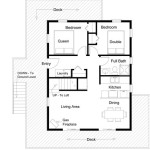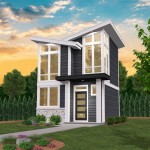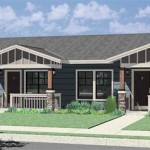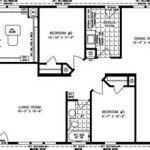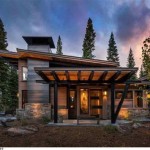House Plans on a Slope: Navigating the Challenges and Maximizing Potential
Designing and building a house on a sloping block presents unique challenges and opportunities compared to building on a level site. While a flat lot offers straightforward construction, a sloped block can unlock breathtaking views, create distinct living spaces, and enhance the overall architectural character of a home. However, successfully executing house plans on a slope requires careful consideration of site conditions, structural engineering, and design principles to ensure stability, functionality, and aesthetic appeal.
Initial assessment of the slope is crucial. This involves determining the degree of the slope, the soil composition, and the presence of any potential hazards such as rock outcrops, drainage issues, or vegetation that could affect the building process. Detailed topographical surveys provide essential data for architects and engineers to develop appropriate building plans. Ignoring these preliminary steps can lead to costly rework, structural instability, and long-term maintenance problems.
One of the fundamental aspects of designing for a slope is managing water runoff. Sloping land naturally directs water flow, and improper drainage can lead to erosion, foundation damage, and waterlogging. Architects must incorporate effective drainage systems, such as retaining walls, swales, and French drains, to redirect water away from the building foundation and maintain the integrity of the site. Furthermore, consideration must be given to the impact of construction on the surrounding environment, ensuring that sediment runoff is minimized and vegetation is protected.
Selecting the right foundation system is paramount for stability on a sloping site. The choice of foundation depends on the steepness of the slope, soil conditions, and the overall design of the house. Common foundation types include slab-on-grade, pier and beam, and stem wall foundations. For steeper slopes, a split-level foundation or a stepped foundation may be necessary to create a level building platform. Each foundation type has its own advantages and disadvantages in terms of cost, construction complexity, and suitability for different site conditions.
Key Considerations for Slope-Specific House Designs
Designing house plans on a slope goes beyond simply adapting a standard plan to the terrain. It requires a deep understanding of how the slope can be integrated into the overall design to create a functional and aesthetically pleasing home. The relationship between the house and the landscape becomes a central element in the design process.
One of the most common strategies is to utilize the slope to create multiple levels within the house. This can result in interesting spatial arrangements, with different levels offering varying degrees of privacy and access to natural light. For example, a walk-out basement can be seamlessly integrated into the lower level of the house, providing additional living space with direct access to the backyard. On the upper levels, large windows and decks can be strategically positioned to capture panoramic views and maximize natural light penetration.
Another key consideration is the orientation of the house. Optimizing the orientation can significantly impact energy efficiency by maximizing solar heat gain in the winter and minimizing it in the summer. In colder climates, orienting the main living areas towards the south can help reduce heating costs, while in warmer climates, shading devices and strategic landscaping can help keep the house cool. The prevailing wind direction should also be considered to promote natural ventilation and reduce reliance on air conditioning.
Accessibility is another important factor to consider, particularly for individuals with mobility challenges. Sloping sites can present significant accessibility barriers, requiring careful planning to ensure that the house is accessible to everyone. Ramps, elevators, and strategically placed walkways can help overcome these obstacles and create a more inclusive living environment. The design should also consider the accessibility of outdoor spaces, such as gardens and patios.
Types of House Plans Suited for Sloping Blocks
Different house plan types are better suited for sloping blocks, depending on the specific characteristics of the site and the desired style of the home. Understanding the advantages and disadvantages of each type can help homeowners make informed decisions about the design of their house.
Split-level homes are a popular choice for sloping sites, as they naturally follow the contours of the land. This design typically features staggered levels, with short flights of stairs connecting the different areas of the house. Split-level homes offer a good balance between functionality and aesthetics, allowing for distinct living spaces while minimizing the need for extensive excavation.
Hillside homes, also known as step-down homes, are designed to be partially embedded into the slope. This type of design can create a strong connection to the landscape, with the house appearing to emerge from the hillside. Hillside homes often feature large windows and decks that offer panoramic views, and they can be very energy-efficient due to the natural insulation provided by the earth.
Stilt houses, also known as pole houses, are elevated above the ground on stilts or piers. This design is particularly well-suited for steep slopes, as it minimizes the need for excavation and allows for natural drainage under the house. Stilt houses offer excellent views and ventilation, and they can be very resilient to flooding and other natural disasters.
Two-story homes can also be adapted for sloping sites, but they typically require more extensive excavation and foundation work. However, two-story homes offer more living space on a smaller footprint, making them a good choice for sites with limited buildable area. The design should carefully consider the placement of windows and decks to maximize views and natural light.
Addressing Challenges and Minimizing Costs
Building on a slope inevitably involves additional costs compared to building on a level site. The added complexity of the foundation, excavation, and drainage systems can significantly increase the overall construction budget. However, careful planning and design can help minimize these costs and maximize the value of the investment.
One of the most effective ways to reduce costs is to minimize the amount of excavation required. This can be achieved by carefully positioning the house on the site and utilizing the natural contours of the land. Retaining walls can also be used to stabilize the slope and reduce the need for extensive excavation. Selecting a house plan that is well-suited for the slope can also help minimize costs.
Another important aspect of cost management is to select durable and low-maintenance materials. On a sloping site, the house will be more exposed to the elements, making it essential to use materials that can withstand the harsh conditions. Durable materials, such as concrete, steel, and treated wood, can help ensure that the house will stand the test of time and minimize the need for costly repairs.
Engaging experienced professionals is crucial for a successful project. Architects, engineers, and builders with specific experience in building on sloping sites can provide valuable insights and guidance throughout the design and construction process. Their expertise can help identify potential problems early on and develop effective solutions to minimize costs and ensure the long-term stability of the house. Additionally, obtaining the necessary permits and approvals from local authorities is essential to avoid delays and potential fines.
Proper landscaping can also play a role in cost management. Strategically planted trees and shrubs can help stabilize the slope, prevent erosion, and improve drainage. Landscaping can also enhance the aesthetic appeal of the house and increase its value. Choosing native plants that are well-suited to the local climate can help minimize maintenance costs and create a sustainable landscape.
Building a home on a sloping site presents both challenges and opportunities. By carefully considering the site conditions, selecting the right house plan, and engaging experienced professionals, homeowners can create a stunning and functional home that maximizes the potential of the land. The added complexities of building on a slope can be outweighed by the unique design possibilities, breathtaking views, and enhanced connection to the natural environment.

Home Designs For Sloping Blocks Mark Lawler Architects

The Architect Split Level House Built On Steep Slope Description From Kathabuzz Co Into Hillside Architecture Unique Plans

Sloped Lot House Plans With Walkout Basements At Dream Home Source Unique Modern Architecture

Home Designs For Sloping Blocks Mark Lawler Architects

Steep Slope Home Designs House Plans 3 Jpeg 480 398 More Houses On Edge Dream Design Architecture Modern

Looking For The Perfect Affordable Cottage With A Large Covered Balcony Plan 1143

Hillside House Slope Design

Home Designs For Sloping Blocks Mark Lawler Architects

Split Level Home Designs For Sloping Blocks G J Gardner Homes

Hillside And Sloped Lot House Plans



